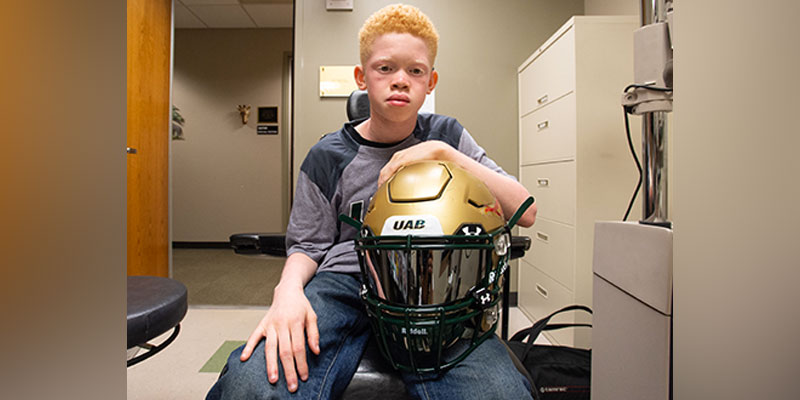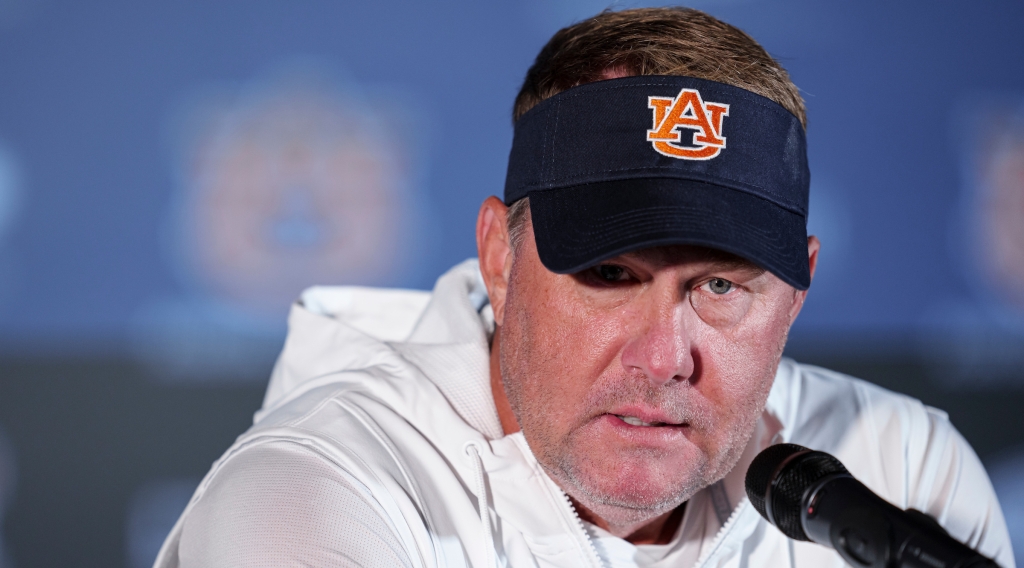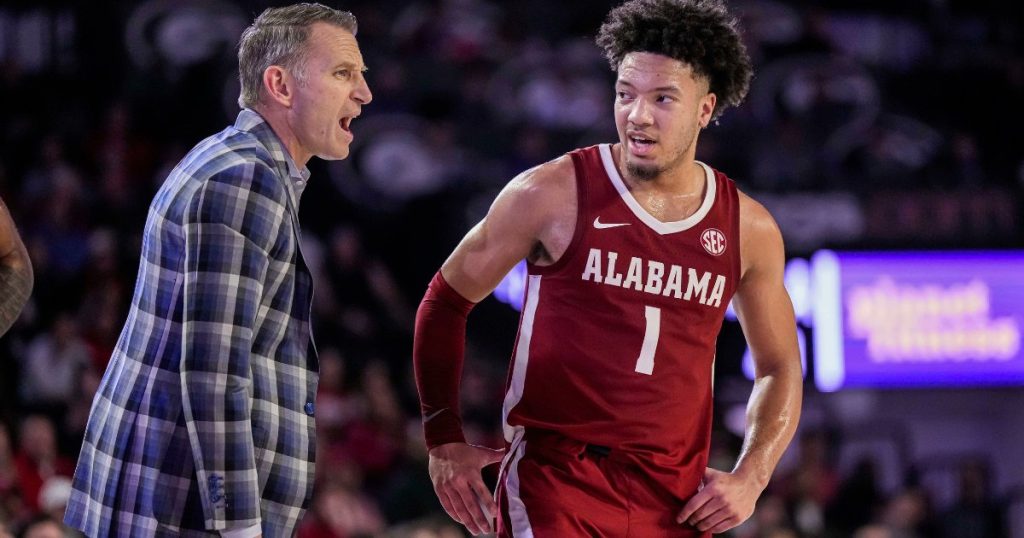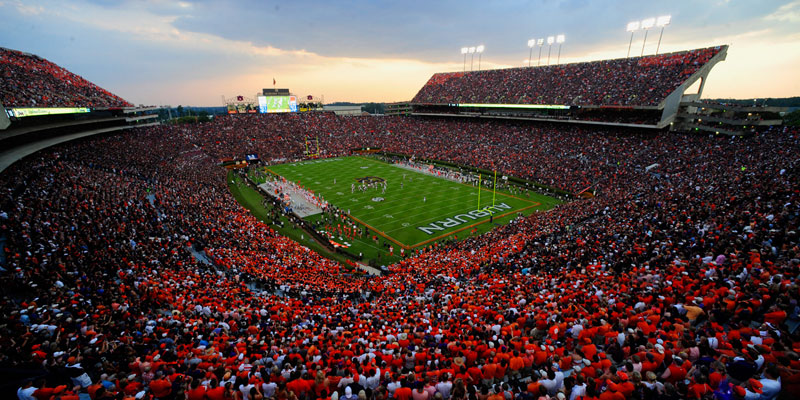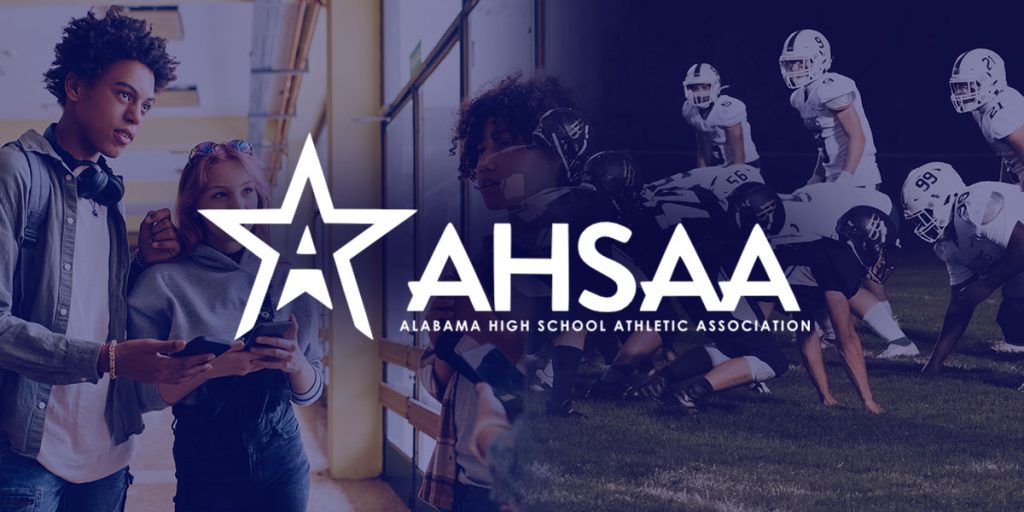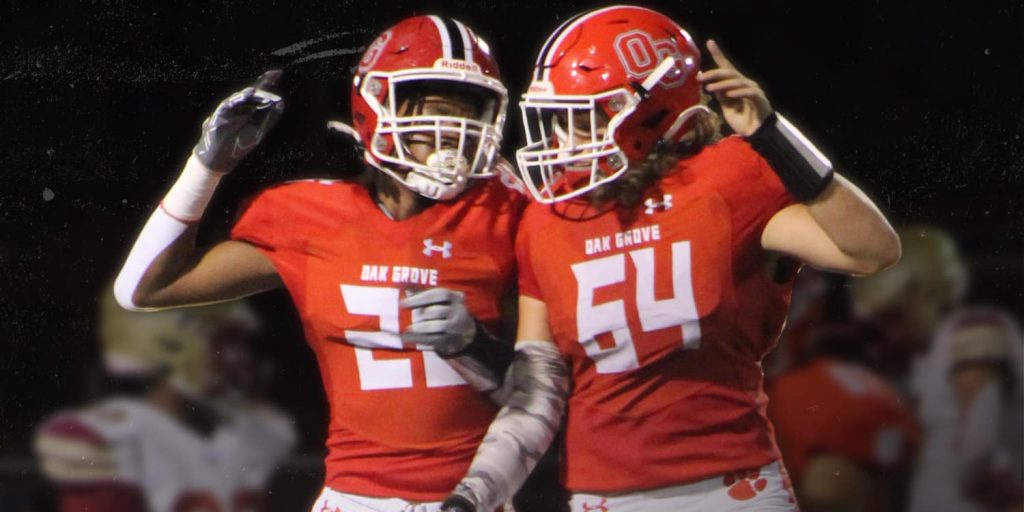For 11-year-old Talyn Lewis, playing outdoor sports posed unique challenges. As he was born with albinism, a genetic condition in which a person is born with little to no pigment in their skin, hair and/or eyes, extreme light sensitivity makes it harder for Talyn to play sports outside because he naturally has no melanin in either iris to block the sun.
“The refs didn’t want me to use a tinted visor even though my pediatrician said I could,” Talyn recalled.
University of Alabama at Birmingham optometrists and ophthalmologists who specialize in retina, neurology, low vision and pediatrics worked with lead medical personnel from the Blazers’ athletics department and changed the paradigm for Talyn and other vision-challenged children. Together, they developed a special visor to enable those with medical-related light sensitivity to play football and worked to modify existing restrictions that did not allow for tinted visors or other apparatuses.
“Many kids who have severe light sensitivity want to be like other kids, and that means many want to be part of a team playing outdoor sports,” said Kathy Weise, O.D., professor at UAB’s School of Optometry and director of UAB Eye Care Pediatric Optometry Services. “However, the light sensitivity that kids with certain health conditions experience can be very significant. We knew we could help maximize comfort, safety and access to play for more kids with special conditions. When I was asked to consider ideas that might help kids with light sensitivity or light-induced health issues, I immediately thought of my pal Talyn and wanted to help.”
Weise helped develop BlazerVision, a partnership between UAB Athletics, the School of Optometry and the Department of Ophthalmology, but knew that change needed to start at the high school level. UAB’s team of eye doctors, along with its lead football team physician and athletic trainer, helped develop a list of specific vison and health conditions that may benefit from adding a tinted visor in a football helmet. They pitched it to the medical director of the Alabama High School Athletic Association, where the ball really got rolling.
“We haven’t seen tinted visors meet regulation standards in sports like football because, although they may seem practical, it may be harder to check the face or the eyes quickly through the visor, or factors like weather may cause the visor to fog up,” Weise said. “So, the tinted visors aren’t for everyone. However, knowing that there are a variety of eye and health conditions that could benefit from having a tinted visor, this is a great first step in keeping these eager kids playing sports that they love, just like their peers.”
When Weise and her UAB team of eye and athletic experts presented the idea to the AHSAA, they suspected that Alabama may be the first in the country to offer this type of help for kids.
In spring 2019, the AHSAA approved allowing physician-recommended tinted visors to be worn by athletes with “inherited and/or congenital eye conditions that limit useful vision in daylight or bright-light environments.”
While this comes at the high school level, Weise sees great potential that a tinted visor could one day be allowed at the collegiate level as well.
“We know these eye and systemic conditions aren’t outgrown, so if we are keeping athletes engaged in sports in high school by means of the tinted helmet visor, these kids could have a chance to play in college, too — maybe even as a UAB Blazer,” Weise remarked. “UAB Football would love to continue to develop ways to enable more kids to stay healthy through all types of sports.”
As for Talyn, he still has a few years until he can play sports in high school, but his eyes are definitely open. He loves basketball and knows the path to play football in high school is one he can pursue.
“He’s always been walking around squinting and has always had to keep something on his eyes, so it’s exciting when you find out that there are options out there,” said Karen Gunter, Talyn’s grandmother. “Just to know that something like this tinted helmet visor exists is simply fantastic. It’s really special knowing that there are doctors out there who understand.”
To see a full list of approved eye and systemic conditions that may indicate tinted helmet visors by the AHSAA, visit here.
(Courtesy of Alabama NewsCenter)




